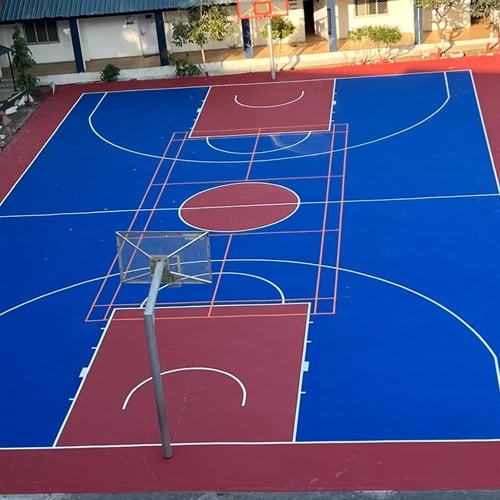A well-constructed sports court is more than just a place to play; it’s the foundation of performance, safety, and long-lasting value. To achieve this, facility owners and contractors must carefully select the right sport court material and apply durable sport court paint. These two elements determine not only the appearance of the court but also its durability, safety features, and gameplay quality.
Importance of Sport Court Material
The choice of sport court material is critical in ensuring long-term functionality. Modern materials are engineered to provide excellent traction, shock absorption, and weather resistance. Depending on the sport—basketball, tennis, futsal, or multi-purpose play areas—the material needs to withstand heavy use and environmental exposure while maintaining performance.
Some commonly used materials include:
- Acrylic Systems – Ideal for tennis and basketball courts, offering durability, UV resistance, and smooth playability.
- Polyurethane (PU) Flooring – Known for its elasticity and comfort, making it suitable for indoor multi-sport facilities.
- Rubberized Surfaces – Popular for gyms and recreational courts due to their shock-absorbing qualities.
- Vinyl Flooring – Affordable and versatile, often used in indoor sports halls.
- Artificial Turf – Perfect for football, hockey, and other field sports, designed to mimic natural grass with less maintenance.
The right material ensures the court provides stability, consistent ball bounce, and safety for athletes.
Role of Sport Court Paint
While the material forms the foundation, sport court paint is what gives the surface its finishing touch. High-quality paint does more than improve aesthetics; it enhances performance and safety. Properly applied coatings provide anti-slip properties, UV protection, and resistance to wear and tear.
Sport court paint is also vital for marking boundaries, center lines, and game zones. Clear, long-lasting lines improve the gameplay experience and ensure that the court complies with official standards. Additionally, modern paints are available in a variety of colors, allowing facilities to customize their courts to reflect branding or team identities.
Benefits of Quality Materials and Paint
- Durability – Both the material and paint resist weather conditions, heavy foot traffic, and fading.
- Safety – Anti-slip textures and shock-absorbing layers reduce the risk of injuries.
- Performance – Ensures consistent ball behavior and smooth player movement.
- Low Maintenance – Requires minimal upkeep, saving time and costs in the long run.
- Aesthetic Value – Bright, customizable colors create visually appealing courts.
Installation and Cost Considerations
The installation process begins with preparing a strong base, followed by layering the chosen sport court material. Once the surface is ready, multiple coats of sport court paint are applied, including line markings. Costs depend on the size of the court, type of materials, and quality of paint used. Although initial investment may be higher, the long-term durability and reduced maintenance justify the expense.
Conclusion
Building a professional, safe, and visually appealing sports facility requires careful attention to materials and finishing. The right sport court material provides a strong, durable foundation, while sport court paint enhances performance, safety, and design. Together, they ensure athletes enjoy a top-quality playing experience and facility owners benefit from long-lasting value.

